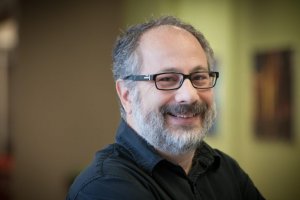Presented By: Michigan Institute for Computational Discovery and Engineering
Thomas Devereaux: Light controlled topological phase transitions in multi-orbital and frustrated magnetic systems
MICDE Seminar Series

Spurred by recent progress in melting, enhancement and induction of electronic order out of equilibrium, a tantalizing prospect concerns instead accessing transient Floquet steady states via broad pump pulses, to affect electronic properties. Here, we consider a two-pronged approach to manipulate the topology of a band insulator, as well as topological order in a Mott insulator. We first consider monolayer transition-metal dichalcogenides (TMDCs) [1], and show that their low-energy description as massive 2D relativistic fermions fails to hold for optical pumping. Instead, the added complexity of a realistic materials description leads to a novel mechanism to optically induce topologically-protected chiral edge modes, facilitating optically-switchable conduction channels that are insensitive to disorder. We develop a strategy to understand non-equilibrium Floquet-Bloch bands and topological transitions directly from ab initio calculations, and illustrate for the example of WS2 that control of chiral edge modes can be dictated solely from symmetry principles and is not qualitatively sensitive to microscopic materials details. Second, we extend these ideas to strongly correlated systems and show that pumping frustrated Mott insulators with circularly-polarized light can drive the effective spin system across a phase transition to a chiral spin liquid (CSL) [2]. We show that the transient time evolution of a Kagome lattice Hubbard model is well captured by an effective spin description, where circular polarization promotes a staggered scalar spin chirality Si . (Sj x Sk) directly to the Hamiltonian level. We fingerprint the ensuing phase diagram and find a stable photo-induced CSL in proximity to the equilibrium ground state. The results presented suggest new avenues to marry dynamical symmetry breaking, strong interactions, and ab initio materials modelling, to access elusive phase transitions that are not readily accessible in equilibrium.
Bio: Professor Devereaux received his Ph.D. in Physics from the University of Oregon in 1991, M.S. from University of Oregon in 1988, and B.S from New York University in 1986.
Professor Devereaux is currently the Director of the Stanford Institute for Materials and Energy Sciences (SIMES), the Associate Lab Director (ALD) for Photon Science, a professor in the Photon Science Faculty at SLAC National Accelerator Laboratory and Stanford University and a Senior Fellow of the Precourt Institute for Energy.
Bio: Professor Devereaux received his Ph.D. in Physics from the University of Oregon in 1991, M.S. from University of Oregon in 1988, and B.S from New York University in 1986.
Professor Devereaux is currently the Director of the Stanford Institute for Materials and Energy Sciences (SIMES), the Associate Lab Director (ALD) for Photon Science, a professor in the Photon Science Faculty at SLAC National Accelerator Laboratory and Stanford University and a Senior Fellow of the Precourt Institute for Energy.